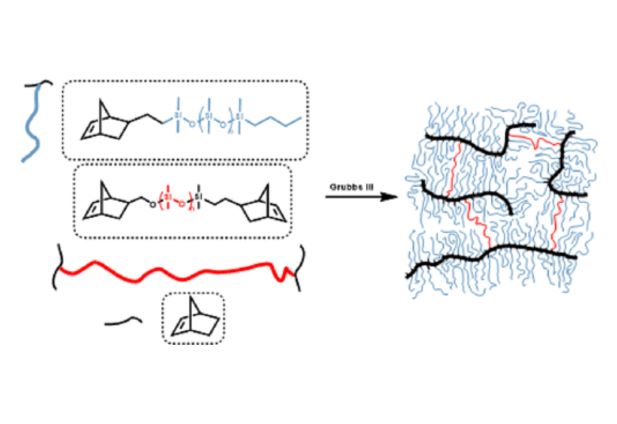Investigating the Stress–Strain Behavior in Ring-Opening Metathesis Polymerization-Based Brush Elastomers
Abstract
Brush networks are intriguing materials that are able to replicate the stress–strain behavior of soft tissue, but the effect of the backbone chemical composition on the network mechanics is largely unknown. Here, we show that brush elastomers made by ring-opening metathesis polymerization (ROMP) of norbornene-terminated poly(dimethylsiloxane) macromonomers are less extensible than brush elastomers with the methacrylate backbone yet not as extensible (λmax) as predicted by the strain-stiffening parameter (β) derived from fitting the experimental stress–strain curves. The softness (E0) and firmness (β) of the norbornene-based networks decrease with decreasing cross-link density as expected, but the λmax significantly drops when the grafting density becomes low enough, which has not been previously observed in this class of materials.
Citation
Investigating the Stress–Strain Behavior in Ring-Opening Metathesis Polymerization-Based Brush Elastomers
Kyle Cushman, Andrew Keith, Joji Tanaka, Sergei S. Sheiko, and Wei You
Macromolecules 2021 54 (18), 8365-8371
DOI: 10.1021/acs.macromol.1c01095


